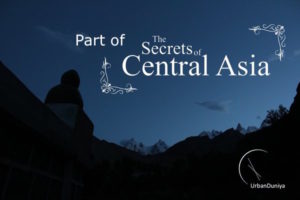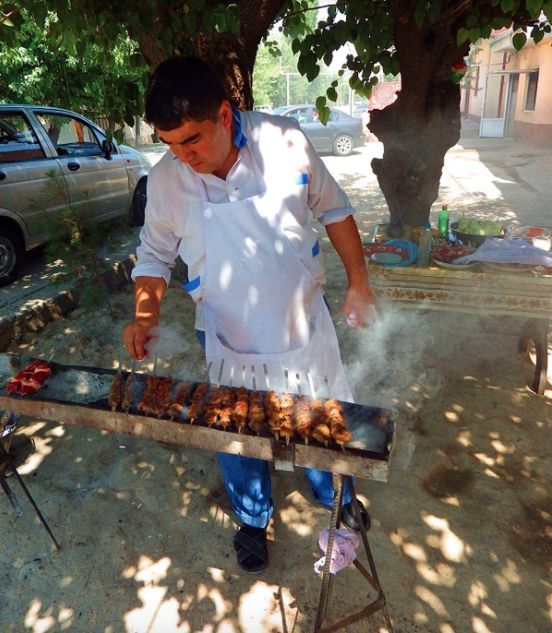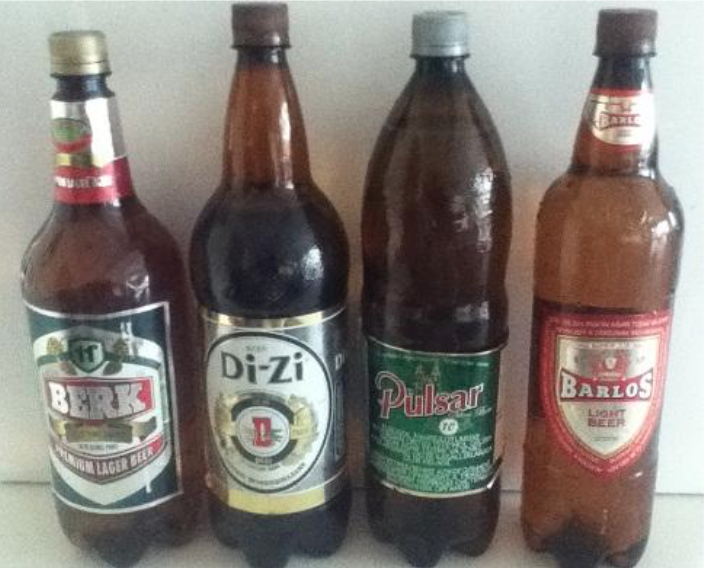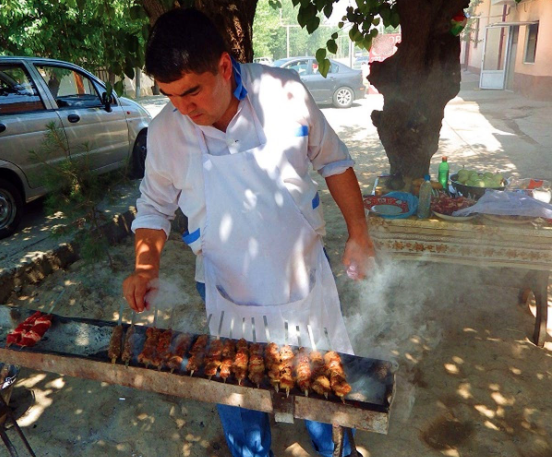More than kebabs and vodka: A guide to Turkmenistan’s cuisine
 Today I’m bringing you another guest post on the Secrets of Central Asia, by my fellow travel blogger Simon Proudman. Simon’s passion lies with far flung places, so that’s what he named his blog; Far Flung Places!
Today I’m bringing you another guest post on the Secrets of Central Asia, by my fellow travel blogger Simon Proudman. Simon’s passion lies with far flung places, so that’s what he named his blog; Far Flung Places!
In the past few months I’ve featured Simon’s articles about Khiva in Uzbekistan, and Darvaza in Turkmenistan. Today he’s taking us on a journey through Turkmenistan’s cuisine!
Simon has recently published the second edition of his travel guide to Turkmenistan, and in less than a week became the best selling guide to the country! Click here to get the low down on the latest Far Flung Places guide to Turkmenistan!

(Image: Simon Proudman)
Well, of course you can survive quite happily on a diet of kebabs (also known as shashlik) and vodka (also known as a spirit that can burn the back of your throat off) while travelling around the country, as these are ubiquitous, and rather tasty. The lamb kebabs in particular can be cooked on outdoor stands to perfection, and with hundreds of different vodkas available in shops you cannot go wrong, unless you go for the cheapest one. If you only spend US$2 on a 500 ml bottle of vodka you will get a liquid more suitable for paint stripping, double that and you will get a tasty drink, often flavoured with local fruits such as melon.
Meat and bread dominate the offerings, and vegetarians will have a somewhat difficult task to seek out meat free meals. The locals do not understand the concept of vegetarianism that well, and will even add slivers of meat to a salad or a vegetable stew for flavouring. Never fear, the wonderful bazaars that are in the centre of all Turkmen cities provide a wonderful array of seasonal fresh fruit and vegetables (make sure you wash those you do not peel to avoid the risk of Central Asian belly problems).
Somosas are also widely available, and can be meals in themselves. If you are ever in Mary, head to the Tandoor Kitchen by the River Margush, and load up on huge somosas (including a rare vegetarian option of spicy potato and cabbage) for around US$1 each. While you wait for the open-air kitchen to finish your order a queue will form, often including be suited businessmen to imams and local police. They taste that good that everyone goes there.
Plov, also the national dish of neighbouring Uzbekistan, is a very filling meal usually only available at lunchtimes. Each region cooks it in their own way, but the staples are chunks of meat, usually lamb but occasionally beef, with the fat attached, being cooked over several hours alongside carrots, onions and lots of rice in a massive cauldron. Slow cooking at its best. The fat permeates the rice giving it a distinctive taste, which makes plov very tasty and filling, albeit not the healthiest choice for a meal.
Meals are almost always accompanied with Naan bread, known locally as Non bread, similar to the Indian variety although with a different texture and more stodgy. They are baked in tandoor ovens first thing in the morning, and without any additional additives in the dough, so buy it early and eat it while it is still warm! By nighttime the bread can be quite stale and hard.
Tea is a common accompaniement for meals, with green tea particularly popular, along with the more exotic camels’s milk, a fizzy, very sour drink that, although locally a delicacy, may not appeal to all western tastes. Sadly Turkmenistan is far from a coffee lovers paradise, as it is mainly provided in the premixed powdered variety.

(Image: Simon Proudman)
Alongside the local vodka and cognac, you can buy local wines, which are incredibly sweet, and, of course, beer. Zip, Di-Zi, Berk and Barlos are the main brands. Wonderfully named, maybe for the effects, stick to Zip and Di-Zi for a more German style brew, both Barlos and Berk suffer from the predliction towards sweetness, which as with the wine, can make them undrinkable. Pulsar, imported from Samarkand in Uzbekistan can be found in some cities, still beats the local brews, grab a bottle if you see it.
Turkmenistan is a place that you will never go hungry, and with most meals costing between US$5 and US$10, it is place for a great choice of cheap Central Asian cuisine. Or you can stick to kebabs and vodka.





kebabs and vodka? Actually sounds ok to me! 😛
Hahahahahahaha so I guess you’d better start planning that trip to Turkmenistan then!
Is it bad that I giggled at the slivers of meat being added to vegetarian dishes for flavour? :/ Haven’t been, but do kinda like the idea of a meat and booze diet.
hhahahahahahahaha it’s the same in Pakistan! But no alcohol here… Central Asia is like barbecue and booze central :p
/\ /\ So what you’re saying is, it’s kinda like Texas
Haha I guess so 😂